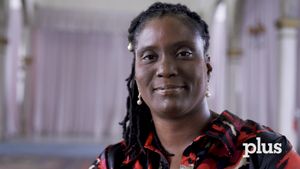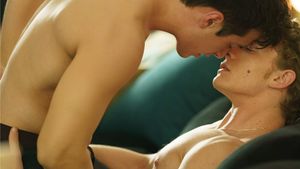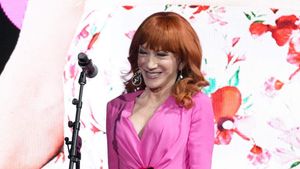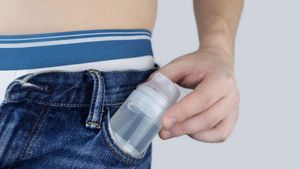CONTACTCAREER OPPORTUNITIESADVERTISE WITH USPRIVACY POLICYPRIVACY PREFERENCESTERMS OF USELEGAL NOTICE
© 2025 Pride Publishing Inc.
All Rights reserved
All Rights reserved
By continuing to use our site, you agree to our Privacy Policy and Terms of Use.
Chinese emperors traditionally employed palace chefs from the Canton region (the area that includes Hong Kong), and for good reason. In China, Cantonese food is seen as the tastiest, freshest, and finest of all the country's regional cuisines. As Hong Kong shook off its sweatshop image in the 1980s and became a prosperous international financial capital, its food scene became more sophisticated and chic (as did its burgeoning gay scene). Before its handover to China in 1997, however, most of this former British colony's top restaurants were sequestered in its foreign-dominated megahotels. Today, ultramodern Hong Kong is one of the priciest cities in the world, full of upscale restaurants that could rival those in Paris or New York City. In fact, it's quickly becoming known as the culinary capital of Asia.
For foodies, the trip to the East is worth every penny. The culinary adventure begins on the flight: Upscale Cathay Pacific Airways uses Hong Kong as its hub and prides itself in serving "the best Chinese food in the air" on its plush business-class flights. I loved the elegant little dim sum breakfasts--Hong Kongers, by the way, usually eat dim sum in the morning at loud and lively dim sum restaurants where elderly waitresses stroll around with carts while hollering out their specials.
One thing to understand about Cantonese fare is its underlying concept of yin and yang. In Taoist culture a balance between the two creates healthiness, and this carries over into eating. Vegetables are seen as "yin" (which pertains to female and cool energy), whereas meat is considered "yang" (which pertains to male and warm energy), while rice and noodles are seen as neutral. Therefore, most Cantonese meals will have equal parts yin, yang, and neutral to achieve the right healthy balance.
With this cultural emphasis on the philosophy of food itself, rather than where and how it is eaten, Hong Kong restaurants traditionally have left much to be desired in terms of relaxing atmosphere or gushing service. That's beginning to change with a new crop of smart and happening eateries. In addition to the artsy, hip (read: very gay) area of Lan Kwai Fong on Hong Kong Island, quite a few gay-friendly restaurants and bars have risen up in the last few years in evolving and fashionable NoHo (the area north of Hollywood Road).
The Michelin-starred Nobu chain just opened a Hong Kong restaurant in December 2006. Chef Nobu Matsuhisa, the pioneer of Japanese haute cuisine ever since his first Nobu opened back in 1994, has set up shop within the Intercontinental Hotel on the Kowloon side, with stunning views directly overlooking Victoria Bay. Nobu's newest restaurant in his mini-empire (the 15th worldwide location) features all the refinement and omakase (from the heart) that diners have come to expect. The inventive Japanese dishes offered at his other outposts are all here, although future plans may include Chinese tastes. His black cod with miso, yellowtail with jalapeño, tiradito Nobu style, and lobster with pepper sauce are as fantastic as always.
Bo, or as it's commonly known, "Bo Innovation," is an astounding new restaurant run by an iconoclastic acoustic engineer–cum-chef, Alvin Leung Jr. This 50-seat spot on Ice House Street near Lan Kwai Fong features truly atypical cuisine that is heavy on the wow factor. Intimate, with a slightly minimalist decor of black, gold, and wood, Bo is hot. I enjoyed Leung's unique take on the traditional lap mei fan (basically assorted dried meats, especially liver, and rice) which he turned into a delicate dollop of pork-sausage ice cream! (Yes, you read that correctly.) "I'm creating modern Chinese--but I'm not fusing anything! There's a purpose in every dish," states Leung emphatically. A serious student of molecular gastronomy who wears his hair long in gray blue–streaked locks, Leung is well-known for his over-the-top personality and innovative dishes.
Opia, nestled in the swank Jia Hotel in Causeway Bay, is appointed in dense and powerful tones of red, mauve, blue, and black that complement the elegant cuisine. Ex-Melbourne executive chef Dan Clouston, a student of über-Aussie Teague Ezard, dishes out fabulous oyster shooters, fascinating exotic salads flown in from Australia, crispy pork hocks, tender lamb dishes, and great Thai spiced rolls. It also offers a great pre-or after-dinner scene for sipping some Dom, Krug, or Cristal.
And believe it or not, visitors checking out the tourist attraction of the newly opened Peak Tower will also discover a brand-new fresh and spotless American-style Bubba Gump Shrimp Company, which offers tasty beers, plenty of fried food, tons of shrimp, and incredible views of the Hong Kong skyline. It's a simple, fun place to cool your heels after hours of sightseeing. Maybe it's not the most chichi of Hong Kong's hot new restaurants, but if you're homesick for some good ol' American cholesterol, you've found nirvana. Just be careful to balance out your yin and yang!
| Mind Your Cantonese Manners | ||
| DO • Pour hot tea for everyone else at the table before you pour your own. Tap your index and middle finger on the table to indicate another "hit" from your pourer. • With your chopsticks, only pick up food from the side of the plate facing you. Reaching any farther is seen as greedy. • Lift your rice bowl to your mouth and scoop the food in. It's a perfectly acceptable custom--and a lot easier if you're not skilled at chopsticks! | DON'T • Eat and talk at the same time. Although Hong Kongers are a talkative bunch, involved conversation is usually put off until after the meal has wound down. • Order your "own" plate when dining with the Chinese. It's seen as extremely rude not to eat from shared plates. • Order seven dishes--that number of items is considered food for ghosts, not humans! Meaning very bad luck. If you're serious about sampling the menu, go for eight. | |
ESSENTIALS: HONG KONG
CHEW
Nobu (2nd Floor, Intercontinental Hotel, 18 Salisbury Rd., Tsimshatsui, Kowloon, 852-2721-1211). Bo Innovation (Ice House 32-38 Ice House St., Central, 852-2850-8373). Opia (1st Floor, JIA Hotel, 1-5 Irving St., Causeway Bay, 852-3196-9100). Bubba Gump Shrimp Company (Shop 304 and 305, Level 3, The Peak Tower, 128 Peak Rd., The Peak, 852-2849-2867).
CHUG
Most of Hong Kong’s gay nightlife is found in or near the hip Lan Kwai Fong area on Hong Kong Island. Drop (39-43 Hollywood Rd., Central, 852-2543-8856) features the city's top DJs, a slick modern atmosphere, and a snobby doorman. All elements combine to make this small crowded bar the hottest ticket in town. Propaganda (1 Hollywood Rd., Central, 852-2868 1316) is one of Hong Kong’s oldest gay nightclubs: large, popular, and still going strong. Works (30-32 Wyndham St. Central; 852-2868 6102) is a smokier, smaller dance club than Propaganda, but with a less expensive cover charge and a friendlier atmosphere. Rice Bar (33 Jervois St., Sheung Wan, 852-2851-4800) is small and trendy, with a pretty-model crowd on the weekends. Club 97 (9 Lan Kwai Fong, Central, 852-2810-9333) has been a Lan Kwai Fong institution for over 20 years. It's a mellow, hip lounge with a mixed gay and straight clientele.
From our Sponsors
Most Popular
Just in Time for Pride – The 15 Gayest Cities in the World in 2023
April 12 2023 6:47 PM
The 13 Least Visited National Parks
January 07 2023 5:00 AM
Get Soaked! with These 35+ Steamy Pool Pics From This Year’s White Party
May 25 2023 9:29 AM
20 Thirsty Pics of #SniffiesRush Campaign Celebrating Frat Life
December 16 2022 3:19 PM
25 Thirsty Pool Party Pics from White Party Palm Springs 2022
April 14 2023 5:55 PM
Sniffies Reveals Horniest Cities
December 22 2022 4:15 PM
15 Thirsty Pics of Moot Lingerie for Men
March 21 2023 7:41 AM
The 7 Best Nude Beaches for Gays in the U.S.
June 09 2022 4:00 AM
The Most Dangerous (& Safest) Countries for LGBTQ+ Travel
March 22 2023 5:00 AM
Outtraveler: Featured Video
Latest Stories
A gay solo traveler goes bear-hunting in Barcelona
November 13 2025 4:31 PM
More than a month: Prioritizing LGBTQ+ health year-round
October 15 2025 12:27 PM
UNITY at Sphere is the perfect Las Vegas attraction for gay tourists
October 03 2025 5:09 PM
Malta is the secret Pride destination where gays are going wild
September 18 2025 4:47 PM
What is a Jubilee? These Catholics just became the first LGBTQ+ people to participate
September 08 2025 12:49 PM
Marriage equality will be banned in these 31 states if Obergefell is overturned
September 08 2025 10:40 AM
Explore the camp, parties, and parade of Provincetown Carnival 2025
September 05 2025 7:03 PM
My big gay Broadway summer
August 27 2025 9:27 AM
Explore Zurich with Swiss style icon Susanne Bartsch
August 25 2025 9:46 AM
Splash House is the secret Pride festival where gays can truly let loose
August 22 2025 9:00 AM
When love sinks, set sail for the Hudson Navigator
August 15 2025 6:00 AM
Need an escape from American anxiety? Consider Colombia.
July 16 2025 11:47 AM
This heavenly hotel in the heart of Hell's Kitchen is the perfect oasis
June 26 2025 6:00 AM
Top 10 LGBTQ+ beach towns perfect for Pride and summer fun
June 05 2025 1:54 PM
Checking out: nhow London, the city’s coolest hotel
June 02 2025 8:45 AM
Cruising the world helped this gay couple find lasting love
May 31 2025 2:45 PM
Gays went feral at an iconic Pride celebration in Pensacola, Florida
May 30 2025 6:00 AM
Wilderness, woods, and Wigstock: Drag icons light up the Catskills
May 28 2025 12:17 PM
Out and About with Christian Cooper
May 28 2025 11:07 AM












































































